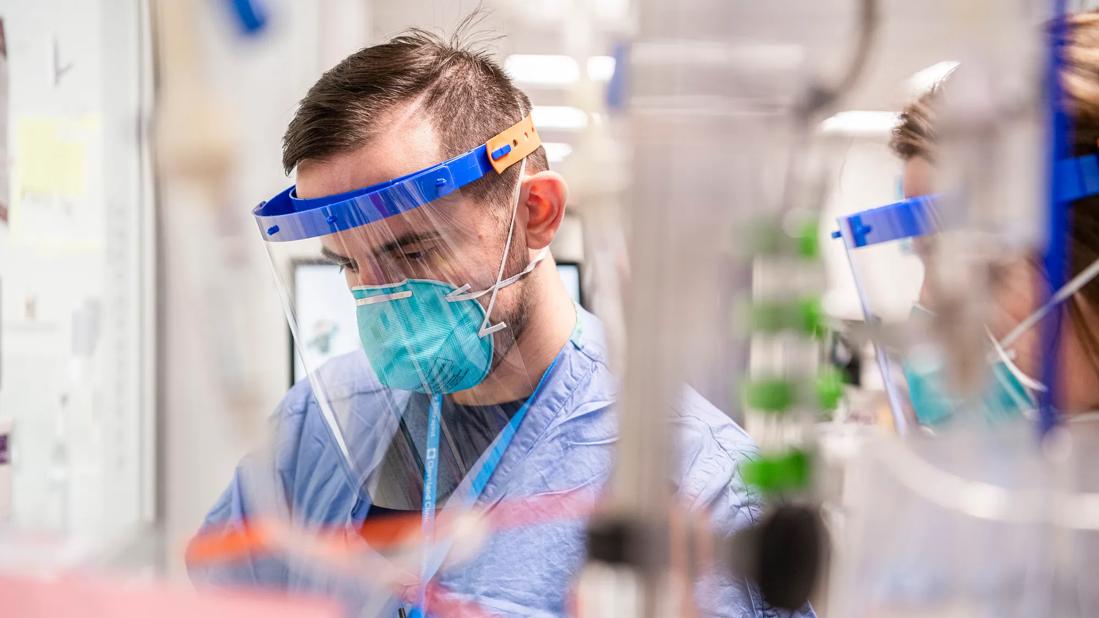New paper analyzes efficacy of safety precautions

Throughout the COVID-19 pandemic, physicians and community leaders have made a series of complex decisions about how best to ensure the safety of patients, caregivers and the public. There have been vigorous exchanges and discourse around the available evidence. Thanks to a paper published on June 1 in The Lancet, there is now clearer evidence around preventive measures in care settings as well as the community.
Advertisement
Cleveland Clinic is a non-profit academic medical center. Advertising on our site helps support our mission. We do not endorse non-Cleveland Clinic products or services. Policy
“At Cleveland Clinic, we are continuously evaluating our guidelines around face masks and coverings, and integrating new data and information as it becomes available to inform our approach,” says Aaron Hamilton, MD, MBA. “We do receive questions from caregivers and patients alike about face masks in particular. The evidence presented in The Lancet review affirms our approach to safety measures, including face masks. The strongest preventive measure they found was physical distancing. They also report that a mask is better than no mask and that eyewear can help.”
Through systemic review, researchers identified 172 observational studies that address common interventions to reduce person-to-person transmission of SARS-CoV-2, SARS-CoV and MERS-CoV. Cleveland Clinic was not involved in the review. Of these 172 studies, 44 articles (n = 25,697 patients) were comparative and included in the meta-analysis.
Analysis of 38 studies revealed a strong association between proximity of the exposed individual and risk of infection. Specifically, absolute risk was 12.8% with shorter distance compared with 2.6% with further distance. At least 1 meter of physical distance is recommended, and maintaining physical distance of 2 meters appears to be more effective.
Researchers analyzed 39 studies that looked at the use of N95 masks and other cloth face masks by those exposed to infected people. Mask wearing was associated with a large reduction in absolute risk: absolute risk was 3.1% with a face mask and 17.4% with no face mask. The association was more pronounced when individuals wore N95 or similar respirators compared to other cloth face coverings, though the researchers considered this evidence less credible.
Advertisement
Additionally, wearing eye protection was associated with lower risk of infection in the 15 studies that addressed them. Absolute risk was 5.5% with eye protection and 16.0% with no eye protection.
“This analysis confirms that face coverings are only part of the equation that keeps us safe. No single tactic is 100% effective; but, when used together, preventive measures like physical distancing, face coverings, hand hygiene and, when indicated by our guidelines, personal protective equipment (PPE) add layers of protection. Face coverings alone are not meant to substitute for these other critical practices,” Dr. Hamilton says.
“Cleveland Clinic requires that caregivers wear face coverings when in shared spaces. Exceptions to this rule are managed through our Occupational Health and Human Resources teams. We strongly recommend cloth masks for patients and visitors, and we provide face masks at points of entry,” Dr. Hamilton continues. “Generally, exceptions to masking are made for people who are under the age of two, have breathing difficulties, or have cognitive or behavioral issues that impair their ability to tolerate a mask.”
According to Dr. Hamilton, Cleveland Clinic leadership is working with their infection prevention team to develop a toolkit to help encourage face masking. This will include scripting for caregivers. “These are challenging scenarios and healthcare providers are working very hard to do their best in managing them. I recommend that we approach this issue of patient face coverings with sensitivity, empathy and curiosity. I’m confident that we will find the best way to serve our patients with this approach,” Dr. Hamilton concludes.
Advertisement
Advertisement

Patients report improved sense of smell and taste

Clinicians who are accustomed to uncertainty can do well by patients

Unique skin changes can occur after infection or vaccine

Cleveland Clinic analysis suggests that obtaining care for the virus might reveal a previously undiagnosed condition

As the pandemic evolves, rheumatologists must continue to be mindful of most vulnerable patients

Early results suggest positive outcomes from COVID-19 PrEP treatment

Could the virus have caused the condition or triggered previously undiagnosed disease?

Five categories of cutaneous abnormalities are associated with COVID-19